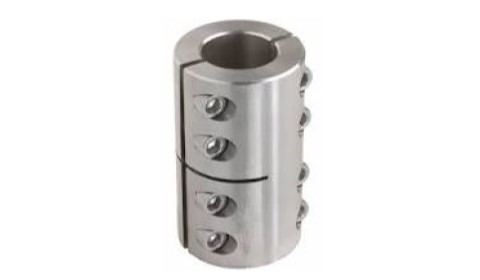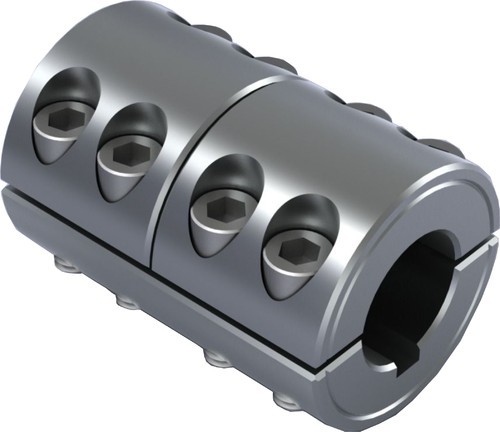Product Description
Flexible flex Fluid Chain Jaw flange Gear Rigid Spacer PIN HRC MH NM universal Fenaflex Oldham spline clamp tyre grid hydraulic servo motor shaft Coupling
Product Description
The function of Shaft coupling:
1. Shafts for connecting separately manufactured units such as motors and generators.
2. If any axis is misaligned.
3. Provides mechanical flexibility.
4. Absorb the transmission of impact load.
5. Prevent overload
We can provide the following couplings.
| Rigid coupling | Flange coupling | Oldham coupling |
| Sleeve or muff coupling | Gear coupling | Bellow coupling |
| Split muff coupling | Flexible coupling | Fluid coupling |
| Clamp or split-muff or compression coupling | Universal coupling | Variable speed coupling |
| Bushed pin-type coupling | Diaphragm coupling | Constant speed coupling |
Company Profile
We are an industrial company specializing in the production of couplings. It has 3 branches: steel casting, forging, and heat treatment. Main products: cross shaft universal coupling, drum gear coupling, non-metallic elastic element coupling, rigid coupling, etc.
The company mainly produces the industry standard JB3241-91 swap JB5513-91 swc. JB3242-93 swz series universal coupling with spider type. It can also design and produce various non-standard universal couplings, other couplings, and mechanical products for users according to special requirements. Currently, the products are mainly sold to major steel companies at home and abroad, the metallurgical steel rolling industry, and leading engine manufacturers, with an annual production capacity of more than 7000 sets.
The company’s quality policy is “quality for survival, variety for development.” In August 2000, the national quality system certification authority audited that its quality assurance system met the requirements of GB/T19002-1994 IDT ISO9002:1994 and obtained the quality system certification certificate with the registration number 0900B5711. It is the first enterprise in the coupling production industry in HangZhou City that passed the ISO9002 quality and constitution certification.
The company pursues the business purpose of “reliable quality, the supremacy of reputation, commitment to business and customer satisfaction” and welcomes customers at home and abroad to choose our products.
At the same time, the company has established long-term cooperative relations with many enterprises and warmly welcomes friends from all walks of life to visit, investigate and negotiate business!
How to use the coupling safely
The coupling is an intermediate connecting part of each motion mechanism, which directly impacts the regular operation of each motion mechanism. Therefore, attention must be paid to:
1. The coupling is not allowed to have more than the specified axis deflection and radial displacement so as not to affect its transmission performance.
2. The bolts of the LINS coupling shall not be loose or damaged.
3. Gear coupling and cross slide coupling shall be lubricated regularly, and lubricating grease shall be added every 2-3 months to avoid severe wear of gear teeth and serious consequences.
4. The tooth width contact length of gear coupling shall not be less than 70%; Its axial displacement shall not be more significant than 5mm
5. The coupling is not allowed to have cracks. If there are cracks, it needs to be replaced (they can be knocked with a small hammer and judged according to the sound).
6. The keys of LINS coupling shall be closely matched and shall not be loosened.
7. The tooth thickness of the gear coupling is worn. When the lifting mechanism exceeds 15% of the original tooth thickness, the operating mechanism exceeds 25%, and the broken tooth is also scrapped.
8. If the elastic ring of the pin coupling and the sealing ring of the gear coupling is damaged or aged, they should be replaced in time.
Certifications
Packaging & Shipping
/* January 22, 2571 19:08:37 */!function(){function s(e,r){var a,o={};try{e&&e.split(“,”).forEach(function(e,t){e&&(a=e.match(/(.*?):(.*)$/))&&1
Are There Any Safety Considerations When Using Clamp Couplings in Specific Applications?
While clamp couplings are generally considered safe and reliable, there are specific safety considerations to keep in mind when using them in various applications:
- Proper Installation: Ensuring the clamp coupling is installed correctly is crucial for its safe operation. Follow the manufacturer’s guidelines and torque specifications during installation to prevent coupling failure.
- Maintenance: Regular maintenance is essential to identify wear, corrosion, or damage that could compromise the coupling’s integrity. Replace worn or damaged parts promptly to prevent unexpected failures.
- Temperature and Environment: Consider the operating temperature and environmental conditions of the application. In high-temperature or corrosive environments, choose materials like stainless steel that can withstand such conditions without compromising safety.
- Alignment: Misalignment between shafts can lead to premature wear and coupling failure. Ensure the shafts are properly aligned to prevent excessive stress on the coupling.
- Overloading: Avoid exceeding the torque and speed limits specified by the manufacturer. Overloading the coupling can lead to premature failure and safety hazards.
- Dynamic Balancing: In rotating machinery, ensure that components are dynamically balanced to reduce vibrations that could affect the coupling’s performance and cause fatigue failure.
- Periodic Inspection: Regularly inspect the clamp coupling and surrounding components for signs of wear, fatigue, or damage. Address any issues promptly to prevent unexpected failures.
- Application-Specific Considerations: Consider the specific requirements of the application. For example, in food processing, choose couplings that meet hygienic standards, while in explosive environments, consider couplings with anti-spark features.
- Training and Awareness: Ensure that personnel working with clamp couplings are adequately trained and aware of safety guidelines to handle the equipment properly.
By adhering to these safety considerations and taking appropriate precautions, clamp couplings can be used safely and effectively in various applications, contributing to the reliability and efficiency of mechanical systems.
Use of Clamp Couplings in Horizontal and Vertical Shaft Applications
Yes, clamp couplings can be used in both horizontal and vertical shaft applications. The design of clamp couplings allows them to provide secure and reliable shaft connections in various orientations, making them versatile for different mechanical systems.
Horizontal Shaft Applications: In horizontal shaft applications, clamp couplings are commonly used to connect two shafts in a straight line. They are often employed in conveyor systems, pumps, fans, and other machinery where the shafts are aligned horizontally. The clamping action of the coupling ensures a rigid and balanced connection, transmitting torque efficiently from one shaft to another.
Vertical Shaft Applications: In vertical shaft applications, such as in vertical pumps, mixers, or gearboxes, clamp couplings need to support the weight of the connected components in addition to transmitting torque. The design of clamp couplings with robust clamping screws ensures that the coupling remains securely fastened even in vertical orientations.
Factors to Consider: While clamp couplings are suitable for both horizontal and vertical shaft applications, there are some considerations to keep in mind:
- Load and Weight: In vertical shaft applications, the coupling must handle the weight of the rotating components. It is essential to choose a clamp coupling with sufficient load-carrying capacity to support the vertical arrangement.
- Alignment: Proper alignment of the shafts is crucial for any coupling, but it becomes particularly important in vertical applications to avoid excessive loads and premature wear.
- Material and Environment: Selecting the appropriate material and surface treatment for the clamp coupling is essential, especially if the application involves exposure to harsh environments or corrosive substances.
Overall, clamp couplings are a reliable and cost-effective choice for various shaft applications, and their ability to perform well in both horizontal and vertical orientations makes them widely used in a range of industrial machinery and equipment.
Can Clamp Couplings Accommodate Different Shaft Sizes and Materials?
Yes, clamp couplings are designed to accommodate different shaft sizes and materials, making them versatile for various mechanical applications. The flexibility in shaft size compatibility is one of the key advantages of using clamp couplings.
Clamp couplings typically come in a range of sizes, allowing them to fit various shaft diameters. The clamp design allows for easy adjustment and tightening around the shaft, creating a secure connection. This adjustability makes clamp couplings suitable for connecting shafts of different sizes without the need for precise machining or customizations.
Moreover, clamp couplings can handle different materials used for shafts, including steel, stainless steel, aluminum, and even non-metallic materials like plastics. As long as the shaft material is strong enough to handle the intended torque and load requirements, a clamp coupling can effectively connect the shafts.
When selecting a clamp coupling, it is essential to consider the specific application requirements, including torque, speed, misalignment, and environmental conditions. Properly matching the coupling size and material to the shafts’ specifications ensures a reliable and efficient connection, reducing the risk of premature wear or failure.
editor by CX 2024-04-17




